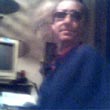|
|
This topic comprises 2 pages: 1 2
|
|
Author
|
Topic: About Show Prints
|
Frank Angel
Film God

Posts: 5305
From: Brooklyn NY USA
Registered: Dec 1999
|
 posted 04-03-2003 04:08 AM
posted 04-03-2003 04:08 AM





I just ran a show print (show print #1, if you can believe the information written on the leader) of THE HOURS. Michael Cunningham who wrote the book was here for a Q&A and Paramount sent this print directly from their offices in Manhattan.
It looked SPECTACULAR -- deep color saturation and sharpness that almost hurt your eyes. Anyone who thinks DLP is going to come anywhere near this kind of film quality has to be folks who have only been looking at those high-speed prints and haven't seen a print like this.
But I have a question -- I was under the impression that a show print (are they sometimes called EK prints?) will not have lab cues but will have to have the cues phyically scribed. Thing is, this print of THE HOURS had lab cues -- black circle with a very slight green edge that made it easy to see even in the dark scenes. Is it possible to have a show print AND have lab cues?
It could be that someone incorrectly labeled this print as a show print, but if it isn't, then DAMN it was a beautiful print and much better than anything I have seen since those reduction prints from 65mm negs, like MY FAIR LADY, LAWRENCE, etc.
I tried to see if it was Kodak's new Vision print film that John P. talks about, but now with all those digital tracks taking up the sprocket and edge geography, there were no edge markings at all on this print. Our projection report has a box for print date that used to be able to be decoded from the three symbols. I guess those are gone for good; has the industry moved to any other kind of marking that can tell what date the stock was made? Seems like just printing the date would be simple enough -- I never could figure out why they needed symbols.
Frank
PS, if this is NOT a show print, then some lab is doing on bang-up excellent job and I'd love to see what their showprints DO look like.
DLP.....eat your heart out
| IP: Logged
|
|
|
|
|
|
|
|
|
|
Scott Norwood
Film God

Posts: 8146
From: Boston, MA. USA (1774.21 miles northeast of Dallas)
Registered: Jun 99
|
 posted 04-03-2003 12:17 PM
posted 04-03-2003 12:17 PM





Show prints or EK prints seem to show up in weird places...we got an EK print (THX TAP grade "B" for all reels) of "Curse of the Jade Scorpion" at Chestnut Hill (pics in the gallery), which is little more than a typical mall theatre (which, sadly, isn't exactly known for "film done right"). It had huge, ugly handmade cue marks (much bigger than a "Clint Phare" marker would make), but was otherwise stunning. Festivals often get show prints/EK prints (which are often the only existing prints of a particular title, and going through the IP/IN stage would be unnecessary for a handful of prints)
As much as I like to complain about the quality of the release prints that Deluxe Hollywood makes, I will give them credit for producing amazing-looking show prints.
I agree with John that the IP/IN process can give excellent results (check out "Real Women Have Curves"--not a great film, but the prints were razor sharp, with good contrast), but it seems that it often doesn't in general practice. I don't know (or care) whether the problem is with the filmmakers, the studios, the film stock, or the labs, but something seems to prevent most wide releases from having great-looking prints.
I find it very sad that modern audiences rarely have the chance to see genuinely high-quality prints. IB Technicolor prints and B&W prints made from the '50s through the '70s put most modern release prints to shame. A few of these prints are even still in circulation, though most are in private hands.
| IP: Logged
|
|
|
|
|
|
|
|
|
|
|
|
|
|
|
|
|
|
|
|
|
|
All times are Central (GMT -6:00)
|
This topic comprises 2 pages: 1 2
|
Powered by Infopop Corporation
UBB.classicTM
6.3.1.2
The Film-Tech Forums are designed for various members related to the cinema industry to express their opinions, viewpoints and testimonials on various products, services and events based upon speculation, personal knowledge and factual information through use, therefore all views represented here allow no liability upon the publishers of this web site and the owners of said views assume no liability for any ill will resulting from these postings. The posts made here are for educational as well as entertainment purposes and as such anyone viewing this portion of the website must accept these views as statements of the author of that opinion
and agrees to release the authors from any and all liability.
|

 Home
Home
 Products
Products
 Store
Store
 Forum
Forum
 Warehouse
Warehouse
 Contact Us
Contact Us




 Printer-friendly view of this topic
Printer-friendly view of this topic









![[Cool]](cool.gif) The proponents of DLP like to conveniently ignore the *potential* of the current film technology, which blows DLP away. Grrr... getting angry...
The proponents of DLP like to conveniently ignore the *potential* of the current film technology, which blows DLP away. Grrr... getting angry... ![[Mad]](mad.gif) must restrain myself...
must restrain myself...

![[Roll Eyes]](rolleyes.gif) - EXCEPT for the effects scenes with heavy compositing and digital enhanced stunt work, all these shots had that slightly blurred look.
- EXCEPT for the effects scenes with heavy compositing and digital enhanced stunt work, all these shots had that slightly blurred look. 





